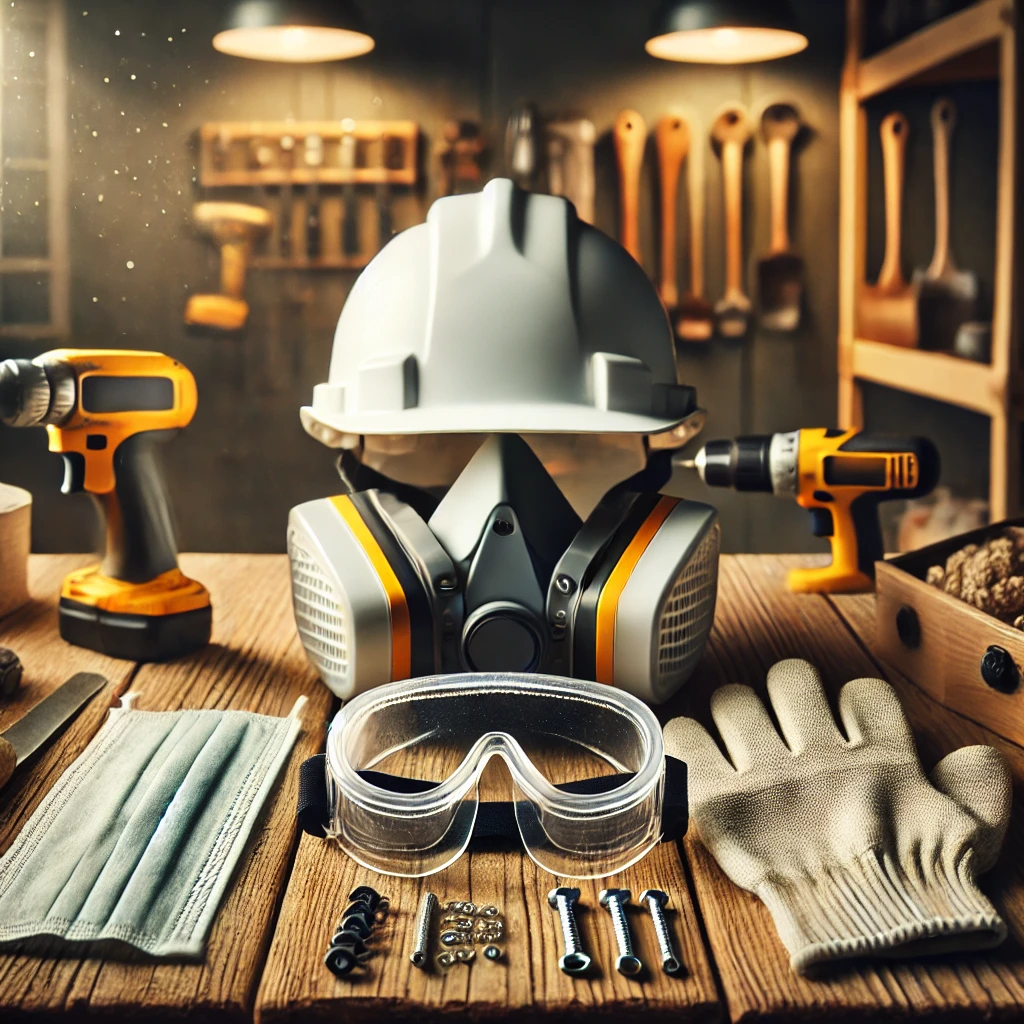Personal protective equipment (PPE) includes various items and gear designed to protect individuals from hazards that could cause injury or illness. These items create a barrier between the wearer and the potential dangers in their environment, ensuring safety during activities like DIY projects, construction, and industrial work.
History
The history of PPE dates back to ancient times when warriors wore armor to protect themselves in battle. Over the centuries, the concept evolved to include gear for various professions. In the industrial age, PPE became more sophisticated with the advent of safety helmets, gloves, and goggles to protect workers in factories. The development of PPE continued through the 20th century with advancements in materials and design, making modern PPE more effective and comfortable.
Types of Personal Protective Equipment
- Head Protection: Helmets, hard hats
- Eye Protection: Safety glasses, goggles, face shields
- Hearing Protection: Earplugs, earmuffs
- Respiratory Protection: Masks, respirators
- Hand Protection: Gloves (latex, nitrile, cut-resistant)
- Body Protection: Aprons, coveralls, jackets
- Foot Protection: Safety boots, steel-toe shoes
- Fall Protection: Harnesses, lanyards, lifelines
Key Features of Personal Protective Equipment
- Durability: Built to withstand wear and tear
- Comfort: Designed for prolonged use without discomfort
- Fit: Available in various sizes to ensure proper coverage
- Compliance: Meets safety standards and regulations
- Visibility: Often includes reflective elements for better visibility
- Material: Made from high-quality materials like leather, rubber, and polycarbonate
Choosing the Right Personal Protective Equipment
Selecting the right PPE involves assessing the specific hazards of your task. Consider the environment, the type of exposure (chemical, physical, biological), and the duration of exposure. Properly fitting PPE is crucial, as ill-fitting equipment can reduce protection and cause discomfort. Always opt for gear that meets safety standards relevant to your region or industry.
Proper Use and Techniques
Proper usage of PPE is essential to ensure maximum protection. Follow the manufacturer’s instructions for donning and doffing each piece of equipment. Regularly inspect PPE for signs of wear or damage, and replace any compromised items immediately. For specific tasks, such as handling chemicals or working at heights, additional training on using the PPE correctly is advisable.
Maintenance and Care
Maintaining PPE involves regular cleaning and proper storage. Clean items according to the manufacturer’s guidelines to avoid damaging the materials. Store PPE in a cool, dry place away from direct sunlight and chemicals. Regularly check for wear and tear, and replace items as necessary to maintain effectiveness.
Safety Tips
- Always wear appropriate PPE for the task at hand.
- Ensure a proper fit to maximize protection.
- Inspect PPE before each use for any damage or wear.
- Replace any PPE that is damaged or no longer fits properly.
- Keep PPE clean and stored correctly to extend its life.
- Stay informed about the latest safety standards and equipment updates.
Conclusion
Personal protective equipment is a critical component of safety in DIY projects and various professions. By understanding the types of PPE, selecting the right equipment, and maintaining it properly, you can significantly reduce the risk of injury and ensure a safer working environment.


